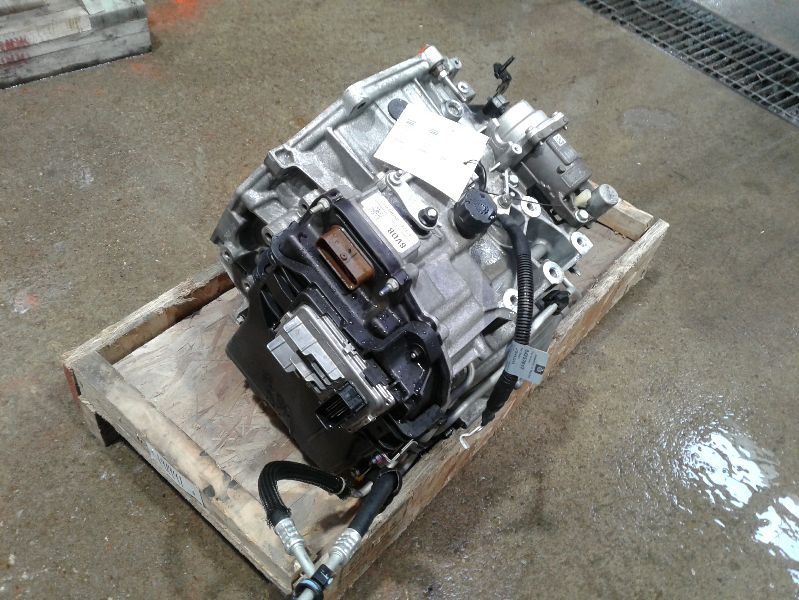
Here’s a more thorough breakdown of the four engines that you could get on the 2013MY Equinox… The 2013 model year is when we saw that a 3.6L direct-injection gasoline engine was introduced as an option on the higher-end LT and LTX models. This may explain why there were so many complaints about the 2013 Chevy Equinox problems. Of all the many iterative updates and facelifts that the 2nd-gen Equinox underwent, the 2013 model year was the first major one. It was beaten in sales by the Silverado and Cruze, respectively.

When it launched, the second-generation Equinox became the third best-selling Chevy in North America. Of the four engine options, they were all mated to the same 6-speed automatic. That 3.6-liter V6 was apparently just as fuel-efficient, despite having 14% more horsepower and 22% more torque. From 2013 onwards, you could get a 3.6-liter LFXV6 too, with an even higher 301hp and 272lb-ft of torque. That one can handle 264hp and 222lb-ft of torque. At the top end, you could get a 3.0-liter High Feature LF1 (or LFW) V6 engine. It could muster 182hp and 172lb-ft of torque. The baseline was a 2.4-liter Ecotec LAF (later the LEA) inline-4 motor. Two powertrain options were made available. Moving past those concerns, for now, you could spec the Equinox either with front-wheel drive (as standard), or all-wheel drive. Rumors also floated that the Equinox’s trip computer would incorrectly log fuel economy figures that were overly optimistic to the driver. There were even claims that Chevrolet and GM “inflated” the fuel economy figures to make it more appealing. Most of their testing, even in highly favorable settings, saw them getting 20% to 30% lower fuel economy than the published EPA ratings. Mostly, it was made to improve fuel economy, which was questioned heavily when journalists finally got their hands on an Equinox.

Initially, its powertrain options were familiar too, with some small tweaks here and there. In its second generation, the Equinox was still riding on the same GM Theta platform but has since been updated to be much stiffer. It went on sale in 2009 as the 2010 model year and had minute evolutions compared to the earlier cars. After all, this is where we’ll find the root of our 2013 Chevy Equinox problems.

Chevy Equinox Second Generationįor today, though, we’ll focus more on the second-generation Equinoxes. The Equinox has gone through significant changes in design, engineering, and its prominence among those looking for an affordable crossover. Over those years, we’ve seen GM and Chevrolet experiment with the Equinox, such as making electric, hydrogen fuel cell, and even natural gas-powered versions of it. There have been numerous changes and developments over that 17-year lifespan. There have been three generations of the Equinox now and is still widely sold here and now in 2021. Rather, they’re the perfect do-it-all SUVs for small families, and works wonders as a daily runabout. These Equinox-shared vehicles are never made to be hardcore off-roaders. So, you’ll find that the Chevy Equinox is mechanically quite similar to the Suzuki XL7, as well. It’s also interesting to note that GM had a joint venture with Suzuki back then. It included crossover-type vehicles made by Pontiac and Saturn (remember them?), Opel, GMC, Saab, Cadillac, and Holden.

Thus, it’s not surprising that the Equinox was related to at least a half dozen other mini GM-based SUVs. Originally, it rode on GM’s modular Theta platform, which was shared among its stablemates. For a long time, the Equinox was Chevy’s entry-level model SUV. What exactly is the Chevy Equinox? First unveiled in 2004 for the 2005 model year, the Equinox was conceived as a mid-size SUV, which later evolved into the compact crossover segment. Given its massive sales record, it may have been a bit hard to conceal just how supposedly unreliable and problematic they are.īut is this an exaggeration, or is there truth behind it? Moreover, is the 2013 model year the one to avoid the most, given the possible prevalence of 2013 Chevy Equinox problems? Well, we’re here to find out if your money is better spent elsewhere…īefore we get into the specifics of the more common 2013 Chevy Equinox problems, it might help us to understand what the subject in question is. As of 2020, more than 3,300,000 Equinoxes have left Chevy showrooms, which just proves how popular they are. At the time, it was among the smallest vehicles they’ve made. The Equinox was launched as Chevrolet and GM’s onslaught on compact crossovers and SUVs. But if there’s one thing that we would easily raise an eyebrow over, is the 2013 Chevy Equinox problems. It’s a rare event, then, that most of us might not have noticed. It happens only twice every year, once in March, and again in September, when day and night are about equal in length – around 12 hours each. “Equinox” is defined as a time or date when the sun crosses the Earth’s celestial equator.


 0 kommentar(er)
0 kommentar(er)
